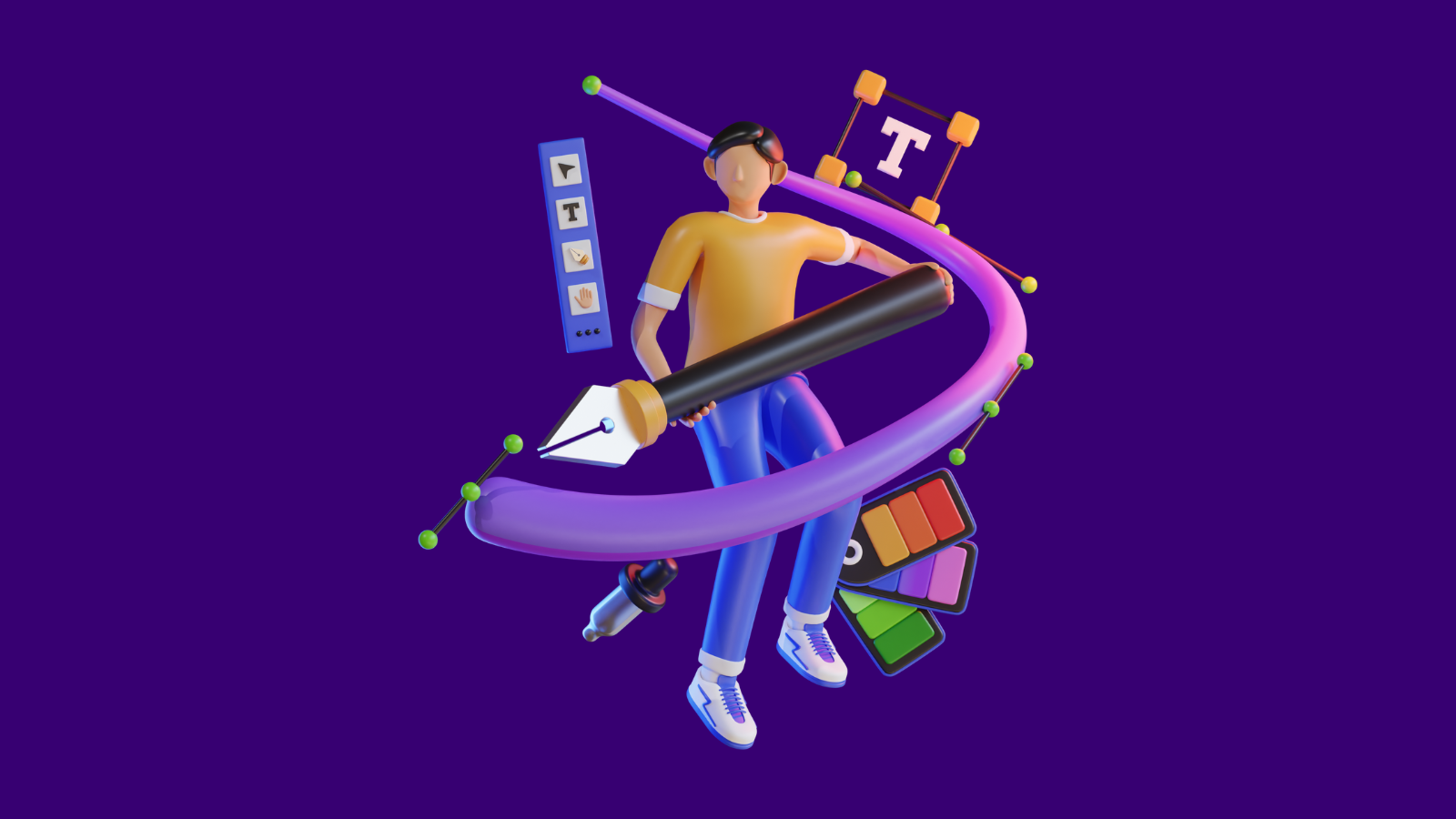Table of Contents
introduction
Did you know that a well-designed user interface could raise your conversion rate by up to 200%? This fascinating insight brings us to the vital role of UX design techniques for apps in the realm of app development. User Experience (UX) is not just about creating an app that looks good; it’s about designing an app that feels intuitive, easy to navigate, and aligns with the users' needs.
In the competitive world of mobile apps, UX design stands as the bridge between a good idea and a great product. Employing effective methods for UX design in mobile apps is crucial for ensuring that an app not only attracts users but also retains them. These techniques go beyond aesthetics; they encompass understanding user behavior, designing for usability, and creating a seamless interaction between the user and the app.
In this digital age, where the user’s attention span is ever-diminishing and choices are abundant, the importance of UX in app development cannot be overstated. A well-crafted UX design can make your app not just a tool but an experience that users return to time and again. It’s about creating a journey within the app that is not just functional but also enjoyable. As we explore the myriad of UX design techniques for apps, remember, it’s not just about what the app does, but how it makes the user feel.

Defining UX Design for Apps
UX design in mobile apps is all about creating an optimal experience for the user when they interact with an app. It's a multidimensional process that extends beyond just how an app looks; it encompasses how it feels and operates from a user’s perspective. Key techniques in mobile app user experience and mobile UX design methodologies involve understanding user needs, designing intuitive interfaces, and ensuring that each interaction is meaningful and efficient.
So, how do you design UX for an app? The process starts with thorough research to understand the target audience, followed by creating user personas and mapping out user journeys. This helps in visualizing the paths users will take within the app. The design phase then translates these insights into a functional user interface, focusing on simplicity and ease of navigation. It’s about creating an environment where users can achieve their goals with minimal friction.
Do UX designers work on apps? Absolutely. UX designers are integral to the app development process. They bridge the gap between the technical functionalities of the app and the end user's requirements. Their role is to advocate for the user, ensuring that the app is not only aesthetically pleasing but also practical and user-friendly.
In summary, UX design for apps is a comprehensive approach to making an app not just usable, but also enjoyable. It involves a deep understanding of user behavior and preferences and translating this knowledge into a cohesive and user-centric design strategy. Through this process, UX designers play a crucial role in crafting digital experiences that users find valuable and engaging.

The 5 W's and H in UX Design
In UX design, the 5 W's (Who, What, Where, When, Why) and How form a foundational framework that guides the design process. This approach, incorporating innovative UX design tactics for apps and UX crafting techniques for mobile applications, is critical in creating effective and user-centered designs.
Who:
Understanding who the users are is the first step. This involves identifying the target audience and creating user personas. Who will be using the app? What are their needs and preferences?
What:
Determining what users will do with the app is key. What are the key functionalities and features that the app must have to meet user needs? This step involves defining the scope of the app.
Where:
The context of where the app will be used also influences UX design. Will users primarily use the app in a specific location, or on the go? The environment can affect design choices, such as layout and navigation.
When:
Timing can be crucial. When will users most likely use the app? Understanding the timing helps in designing features that cater to specific user activities at certain times.
Why:
Perhaps the most critical, why users would choose to use the app over others. This involves understanding the value proposition and what makes the app unique.
How:
Finally, how will users interact with the app? This is where UX design techniques come to life, focusing on how the app functions, how easy it is to navigate, and how users achieve their goals within the app.
By answering these 5 W's and H, UX designers can develop a comprehensive understanding of the user's needs and expectations, thereby crafting an app that is not only functional but also delightful to use.
The UX Design Process
The UX design process in app development is a journey that meticulously shapes the user's interaction with the app. It involves five crucial stages, each focusing on a different aspect of creating a seamless user experience.
-
Empathize:
The first step is about understanding the user. It involves research to gather insights about the target audience, their needs, challenges, and behaviors.
-
Define:
This stage is about defining the core problem based on the insights gathered. It involves creating user personas and user journey maps.
-
Ideate:
Here, designers brainstorm solutions and ideas. It’s a creative process where multiple possibilities for design solutions are explored.
-
Prototype:
This phase involves turning ideas into tangible forms. From wireframes to interactive prototypes, this stage helps in visualizing the design solutions.
-
Test:
Finally, the prototypes are tested with real users. This stage is crucial for gathering feedback and understanding the efficacy of the design.
Each of these stages plays a pivotal role in techniques for enhanced app user experience and forms the backbone of mobile UX design strategies. The process is iterative, often involving going back and forth between stages to refine and improve the design. By following these steps, UX designers can ensure that the app not only looks appealing but also provides an intuitive and user-friendly experience.
UserX’s Role in UX Design
In the realm of mobile app development, UserX has established itself as a key player in enhancing UX design techniques. With its suite of advanced tools and features, UserX provides invaluable insights into user interactions, making it an essential part of advanced UX techniques for mobile apps.
Session Recordings:
UserX's session recordings offer a real-time glimpse into how users interact with the app. This feature is invaluable for understanding user behavior, identifying usability issues, and fine-tuning the user interface for optimal performance.
Heatmaps:
Heatmaps provided by UserX reveal user engagement hotspots within the app. This visualization tool helps designers understand which areas of the app are most interacted with and thus should be prioritized in the design process.
User Flows:
Understanding the path taken by users within the app is made easier with UserX’s user flow feature. It shows the journey users take from one point to another, highlighting potential drop-off points and areas that need simplification or enhancement.
Informed Design Decisions: By integrating these features, UserX aids in refining app user experience design approaches. It provides actionable data that informs design decisions, ensuring that the app not only meets but exceeds user expectations.
In conclusion, UserX bridges the gap between user needs and app functionality. It empowers designers and developers with the tools and insights needed to create user-centric apps that are not just functional but also engaging and intuitive. By leveraging UserX, the process of UX design becomes a data-driven journey, paving the way for apps that truly resonate with users.

Conclusion
The significance of UX design in app development is paramount. It transcends beyond mere aesthetics, delving into the realms of user satisfaction, engagement, and the overall success of the app. A well-crafted UX design is the cornerstone of any successful mobile application, as it directly influences how users perceive and interact with the app. By prioritizing UX design, developers ensure that their app is not only functional but also intuitive and appealing to the users. In the ever-competitive app market, outstanding UX design is not just an option; it's a necessity for standing out and resonating with the target audience. Ultimately, investing in effective UX design is investing in the app's future.
FAQ
What is UX Design in App Development?
UX design in app development involves creating a user-friendly, intuitive, and enjoyable experience for app users. It encompasses the app's layout, design, usability, and functionality, focusing on user satisfaction and ease of use.
Why is UX Design Important for Mobile Apps?
Good UX design is crucial for mobile apps as it directly impacts user engagement, retention, and the overall success of the app. It ensures that users find the app easy to use and enjoyable, which is key to maintaining a strong user base.
How Does UX Design Affect User Retention?
UX design greatly affects user retention as it determines the first impression and overall satisfaction of the app. A well-designed UX can encourage users to keep using the app, while a poor UX can lead to higher churn rates.
Can UX Design Improve App Performance?
Yes, effective UX design can improve app performance by streamlining navigation, optimizing load times, and ensuring that the app meets the users' needs, ultimately leading to a smoother and more efficient user experience.
What are Common UX Design Techniques?
Common UX design techniques include user research, wireframing, prototyping, usability testing, and iterative design. These techniques help in understanding the user's needs and creating an app that caters to those needs effectively.



